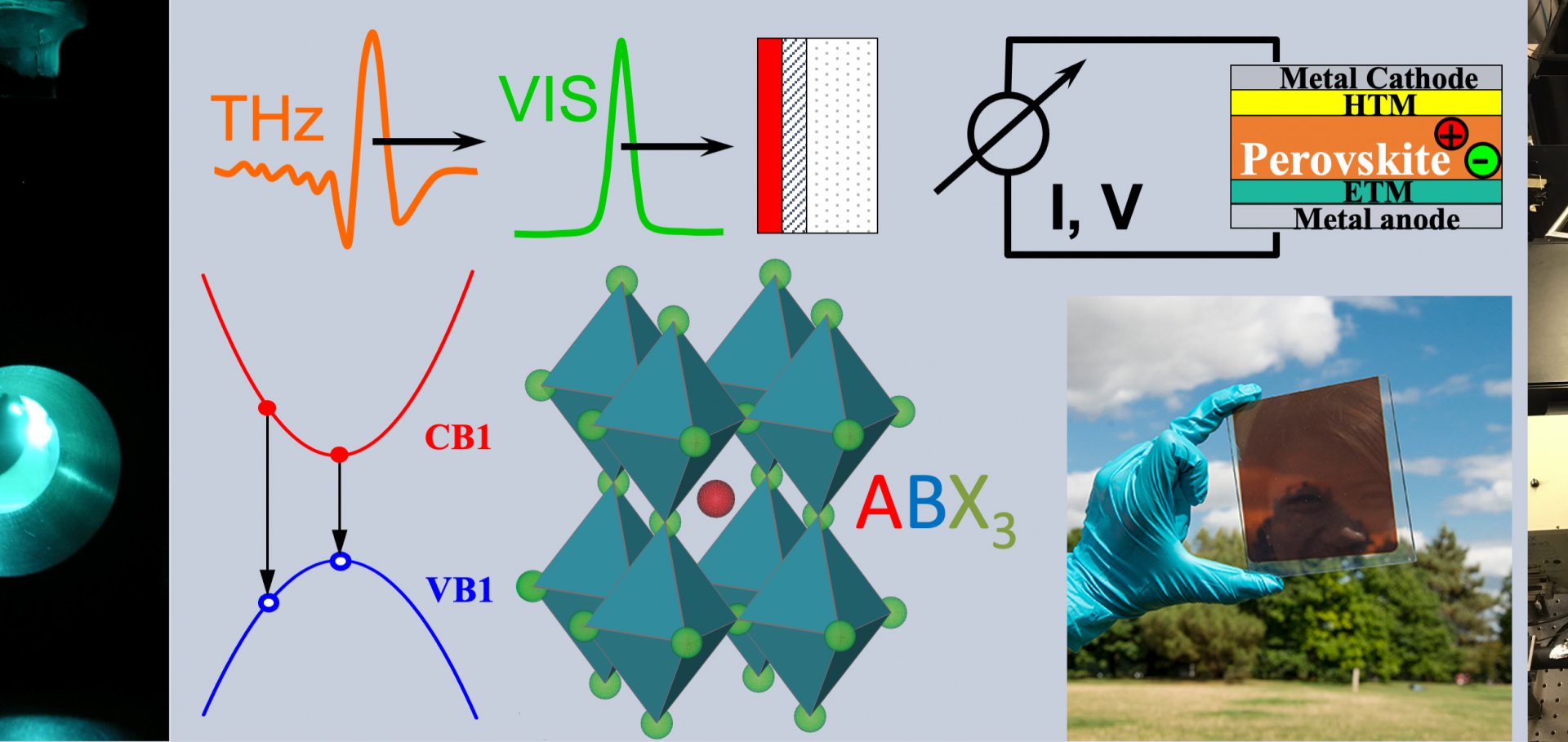The origin of an efficiency improving "light soaking" effect in SnO 2 based solid-state dye-sensitized solar cells
Energy and Environmental Science 5:11 (2012) 9566-9573
Abstract:
We observe a strong "light-soaking" effect in SnO 2 based solid-state dye-sensitized solar cells (SDSCs). Both with and without the presence of UV light, the device's short-circuit photocurrent and efficiency increase significantly over 20-30 minutes, until steady-state is achieved. We demonstrate that this is not due to improved charge collection and investigate the charge generation dynamics employing optical-pump terahertz-probe spectroscopy. We observe a monotonic speeding-up of the generation of free-electrons in the SnO 2 conduction band as a function of the light-soaking time. This improved charge generation can be explained by a positive shift in the conduction band edge or, alternatively, an increase in the density of states (DoS) at the energy at which photoinduced electron transfer occurs. To verify this hypothesis, we perform capacitance and charge extraction measurements which indicate a shift in the surface potential of SnO 2 of up to 70 mV with light soaking. The increased availability of states into which electrons can be transferred justifies the increase in both the charge injection rate and ensuing photocurrent. The cause for the shift in surface potential is not clear, but we postulate that it is due to the photoinduced charging of the SnO 2 inducing a rearrangement of charged species or loss of surface oxygen at the dye-sensitized heterojunction. Understanding temporally evolving processes in DSCs is of critical importance for enabling this technology to operate optimally over a prolonged period of time. This work specifically highlights important changes that can occur at the dye-sensitized heterojunction, even without direct light absorption in the metal oxide. © 2012 The Royal Society of Chemistry.Unraveling the function of an MgO interlayer in both electrolyte and solid-state SnO 2 based dye-sensitized solar cells
Journal of Physical Chemistry C 116:43 (2012) 22840-22846
Abstract:
The coating of n-type mesoporous metal oxides with nanometer thick dielectric shells is a route that has proven to be successful at enhancing the efficiency of some families of dye-sensitized solar cells. The primary intention is to introduce a "surface passivation layer" to inhibit recombination between photoinduced electrons and holes across the dye-sensitized interface. However, the precise function of these dielectric interlayers is often ambiguous. Here, the role of a thin MgO interlayer conformally deposited over mesoporous SnO 2 in liquid electrolyte and solid-state dye-sensitized solar cells is investigated. For both families of devices the open-circuit voltage is increased by over 200 mV; however, the short-circuit photocurrent is increased for the solid-state cells, but reduced for the electrolyte based devices. Through electronic and spectroscopic characterization we deduce that there are four distinct influences of the MgO interlayer: It increases dye-loading, slows down recombination, slows down photoinduced electron transfer, and results in a greater than 200 mV shift in the conduction band edge, with respect to the electrolyte redox potential. The compilation of these four factors have differing effects and magnitudes in the solid-state and electrolyte DSCs but quantitatively account for the difference in device performances observed for both systems with and without the MgO shells. To the best of our knowledge, this is the most comprehensive account of the role of dielectric shells in dye-sensitized solar cells and will enable much better interfacial design of photoelectrodes for DSCs. © 2012 American Chemical Society.Ultralow surface recombination velocity in InP nanowires probed by terahertz spectroscopy.
Nano Lett 12:10 (2012) 5325-5330
Abstract:
Using transient terahertz photoconductivity measurements, we have made noncontact, room temperature measurements of the ultrafast charge carrier dynamics in InP nanowires. InP nanowires exhibited a very long photoconductivity lifetime of over 1 ns, and carrier lifetimes were remarkably insensitive to surface states despite the large nanowire surface area-to-volume ratio. An exceptionally low surface recombination velocity (170 cm/s) was recorded at room temperature. These results suggest that InP nanowires are prime candidates for optoelectronic devices, particularly photovoltaic devices, without the need for surface passivation. We found that the carrier mobility is not limited by nanowire diameter but is strongly limited by the presence of planar crystallographic defects such as stacking faults in these predominantly wurtzite nanowires. These findings show the great potential of very narrow InP nanowires for electronic devices but indicate that improvements in the crystallographic uniformity of InP nanowires will be critical for future nanowire device engineering.Noncontact measurement of charge carrier lifetime and mobility in GaN nanowires.
Nano Lett 12:9 (2012) 4600-4604
Abstract:
The first noncontact photoconductivity measurements of gallium nitride nanowires (NWs) are presented, revealing a high crystallographic and optoelectronic quality achieved by use of catalyst-free molecular beam epitaxy. In comparison with bulk material, the NWs exhibit a long conductivity lifetime (>2 ns) and a high mobility (820 ± 120 cm(2)/(V s)). This is due to the weak influence of surface traps with respect to other III-V semiconducting NWs and to the favorable crystalline structure of the NWs achieved via strain-relieved growth.Energy transfer processes along a supramolecular chain of π-conjugated molecules.
Philos Trans A Math Phys Eng Sci 370:1972 (2012) 3787-3801


